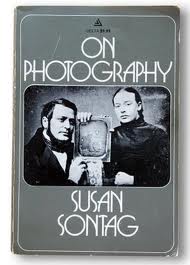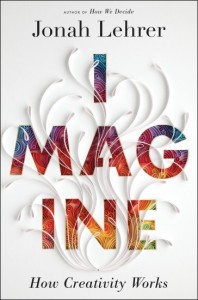 The internet presently finds itself awash in sleuthing about and commentary on a widely touted “plague” of a practice oxymoronically labeled “self-plagiarism.” The hapless poster boy for this presumably unethical practice, The New Yorker pop-science maven Jonah Lehrer, got caught reusing some of his own material. His punishment? Mao-era Cultural Revolution-style public self-criticism, during which he confessed to being “lazy” and “stupid,” followed by his forced resignation from his new staff position at the magazine.
The internet presently finds itself awash in sleuthing about and commentary on a widely touted “plague” of a practice oxymoronically labeled “self-plagiarism.” The hapless poster boy for this presumably unethical practice, The New Yorker pop-science maven Jonah Lehrer, got caught reusing some of his own material. His punishment? Mao-era Cultural Revolution-style public self-criticism, during which he confessed to being “lazy” and “stupid,” followed by his forced resignation from his new staff position at the magazine.
Now, to be precise, Lehrer lost his slot at The New Yorker for his fabrication of quotes from Bob Dylan (published not in The New Yorker but in Lehrer’s best-selling spring 2012 book, Imagine: How Creativity Works). Unquestionably unethical and unprofessional to put invented words in anyone’s mouth. He also appears to have appropriated passages of text from Malcolm Gladwell and others without using quotation marks or crediting them in the book. There’s no acceptable defense for those misdeeds, for which Lehrer richly deserved to get spanked hard.
But no one’s disputing that. The longer-term uproar involves Lehrer’s practice of reusing some or all of a previously published piece of his own writing without specifically indicating its original appearance. As Josh Levin reports in his June 19, 2012 commentary for Slate, “Why Did Jonah Lehrer Plagiarize Himself?” The New Yorker felt obligated to annotate Lehrer’s half-dozen blog posts shortly before the Dylan-quotes crisis. Levin writes that the magazine “has now appended editors’ notes to all five posts on Lehrer’s new blog Frontal Cortex and to an additional post he wrote about Steve Jobs in 2011. Those notes acknowledge that ‘paragraphs,’ ‘portions,’ or ‘details’ originally appeared in writing that Lehrer had done elsewhere.”
I consider Levin’s answer to the question posed in his essay’s title, “Why Did Jonah Lehrer Plagiarize Himself?” as it appears in the subhead — “Because he stopped being a writer and became an idea man” — foolish and unprofessional. Over the past century and a half countless authors, ranging from scholars to critics to journalists to creative writers, have repurposed extracts from and even complete texts of their own that they’ve previously published. I find the assertion that they thereby “stopped being writers” risibly jejune. For example:
- If Edmund Wilson took a half-dozen separate book reviews he’d written and reworked them into a feature article, then reworked three or so of those feature articles into a chapter of a book, and built a book that way, as he typically did, no one thought twice about it or questioned his ethics. In the acknowledgments to his books he listed periodicals in which some of the material previously appeared; in the articles conglomerating separate reviews he rarely did. No one considered annotation of these sources obligatory.
- If William Burroughs took a chunk of prose from a previous fiction, put it through his “cut-up” technique, and inserted the resulting verbal collage into a new fiction, no one thought twice about it or questioned his ethics. No one considered annotation of these sources obligatory.
I should also note that concern about this practice not only constitutes a new tempest in a teapot but restricts itself to the written word:
- If Rembrandt took the plate of an etching he’d previously authorized and sold prints of, reworked it by leaving some of the previous imagery intact and adding some new imagery, made new prints of the resulting “state,” and issued them, no one thought twice about it or questioned his ethics.
- If Bob Dylan reworks the arrangement and melody of a familiar song of his own (as he always does), revises some of the lyrics, then performs and/or records his new version thereof, no one thinks twice about it or questions his ethics. (Note: for my discussion of Dylan’s use of photographs by others as the basis for his paintings, click here.)
- If Jerry Uelsmann takes the negative of an image he’s used in a previous image (such as his once-recurrent peapod or floating tree) and incorporates it into a new photomontage, no one thinks twice about it or questions his ethics.
In short, writers, musicians, visual artists, choreographers, and other “content providers” regularly return to, reconsider, revise, borrow from, and otherwise cannibalize their previous output. No one even marginally literate in the arts can claim unawareness of the copious evidence of this as common practice. I assume that includes Josh Levin, whose posturing on this matter I thus find preposterous.
More importantly, I challenge the underlying concept of “self-plagiarism,” an oxymoron because plagiarism involves taking material you haven’t created and claiming it as your own. You can engage in self-parody, consciously or not; you can repeat yourself, consciously or not; but you can’t plagiarize yourself, except in a very narrowly restricted legal sense which isn’t relevant in the Lehrer case.
•
 Let’s separate out some issues that have gotten conflated in this brouhaha.
Let’s separate out some issues that have gotten conflated in this brouhaha.
First, if as the original author of any form of intellectual property you have sold or permanently transferred your copyright and subsidiary rights to a particular work (via what’s called a “work made for hire” or WMFH contract), you have legally ceased to be its author — even if your name continues to appear on the work when published. The new copyright holder becomes the author, according to the law.
Thereafter you can claim authorship in a list of credits, but you can’t republish that material, in whole or in part, without permission from the copyright holder; and any quotation therefrom by you is subject to the same “fair use” strictures as extracts from a piece of work by someone other than yourself. Furthermore, in such cases your contract may allow the new copyright holder to put someone else’s name on the material, in which case any reuse by you of that material under your own name would constitute plagiarism, technically.
 (In “The Van Buren Boys,” a classic episode of the sitcom Seinfeld, Kramer sells the rights to his colorful life stories for $750 to J. Peterman, who buys them for use in his own autobiography. When Kramer subsequently starts to recount one of those anecdotes to some friends, Elaine stops him peremptorily, on the grounds that those stories are no longer his to tell — they now belong to Peterman. An excellent illustration of this principle.)
(In “The Van Buren Boys,” a classic episode of the sitcom Seinfeld, Kramer sells the rights to his colorful life stories for $750 to J. Peterman, who buys them for use in his own autobiography. When Kramer subsequently starts to recount one of those anecdotes to some friends, Elaine stops him peremptorily, on the grounds that those stories are no longer his to tell — they now belong to Peterman. An excellent illustration of this principle.)
I gather from the reports that Lehrer did not violate copyright in repurposing some of his prose, so I assume that he retains the copyright to his articles and books and simply licenses publication rights, as I do. However, his agreement with The New Yorker may well have required him to provide them with “new and previously unpublished material” for his blog. In that situation, he certainly had an obligation to indicate to his readers (including his first reader, his editor) when he was quoting himself, and to do so sparingly. If he didn’t, then possibly he breached his contract with his publisher — not a savvy thing to do, and certainly cause for dismissal.
•
Beyond that, to what extent should we consider a maker of IP obligated to annotate each and every repurposing of material from his or her inventory? In “Jonah Lehrer’s Self-Plagiarism Issues Are Snowballing,” published on June 20 by New York magazine, Joe Coscarelli writes of “huge chunks of [Lehrer’s] writings at Wired, The New Yorker, and The New York Times Magazine reappearing almost exactly in his new book, Imagine.” Of course they do — and I say that not cynically but as a working writer.
 Roland Barthes constructed his book Mythologies from essays that originally appeared in Les Lettres Nouvelles, a French literary journal. Susan Sontag’s On Photography first took form as a series of articles for The New York Review of Books. Yes (collective gasp here, please), paragraphs, portions, or details of these classics — indeed, “huge chunks” thereof — originally appeared “almost exactly” in writings that these authors had previously published elsewhere. Levin would have it that Barthes and Sontag, and others who have done likewise, thereby “stopped being writer[s] and became . . . idea [men and women],” while Coscarelli implies that we should be shocked, shocked, by Barthes and Sontag incorporating that earlier material into their books.
Roland Barthes constructed his book Mythologies from essays that originally appeared in Les Lettres Nouvelles, a French literary journal. Susan Sontag’s On Photography first took form as a series of articles for The New York Review of Books. Yes (collective gasp here, please), paragraphs, portions, or details of these classics — indeed, “huge chunks” thereof — originally appeared “almost exactly” in writings that these authors had previously published elsewhere. Levin would have it that Barthes and Sontag, and others who have done likewise, thereby “stopped being writer[s] and became . . . idea [men and women],” while Coscarelli implies that we should be shocked, shocked, by Barthes and Sontag incorporating that earlier material into their books.
What nonsense. Certainly Lehrer should have indicated in his acknowledgments for Imagine that portions thereof had appeared previously; this too is standard operating procedure, followed by Barthes and Sontag and many others, myself included. Doubtful, however, that Lehrer’s editor and publisher for Imagine didn’t know that he’d repurposed much earlier material; presumably those widely circulated prior explorations of the concepts led to the book deal in the first place. So he didn’t trick his publishers for that volume, Houghton Mifflin Harcourt, nor his editor there, who need to hombre up by taking some responsibility for this aspect of the debacle, instead of just pulling the book from distribution.
As for misleading the readers, I’ve found few readers ever pay attention to the acknowledgments, so inclusion of those indicators would have gone widely unnoticed. In any case, when was the last time you decided not to read a book because portions of it, or even the entire book, had previously appeared in periodicals?
•
This post supported by a donation from the Estate of Lyle Bongé.
•
 Special offer: If you want me to either continue pursuing a particular subject or give you a break and (for one post) write on a topic — my choice — other than the current main story, make a donation of $50 via the PayPal widget below, indicating your preference in a note accompanying your donation. I’ll credit you as that new post’s sponsor, and link to a website of your choosing. Include a note with your snail-mail address (or email it to me separately) for a free signed copy of my 1995 book Critical Focus!
Special offer: If you want me to either continue pursuing a particular subject or give you a break and (for one post) write on a topic — my choice — other than the current main story, make a donation of $50 via the PayPal widget below, indicating your preference in a note accompanying your donation. I’ll credit you as that new post’s sponsor, and link to a website of your choosing. Include a note with your snail-mail address (or email it to me separately) for a free signed copy of my 1995 book Critical Focus!
 As a bonus, I’ll include a copy of The Silent Strength of Liu Xia, the catalog of the 2012-13 touring exhibition of photos by the dissident Chinese photographer, artist, and poet, currently in her sixth year of extralegal house arrest in Beijing. The only publication of her photographic work, it includes all 26 images in the exhibition, plus another 14 from the same series, along with essays by Guy Sorman, Andrew Nathan, and Cui Weiping, professor at the Beijing Film Academy.
As a bonus, I’ll include a copy of The Silent Strength of Liu Xia, the catalog of the 2012-13 touring exhibition of photos by the dissident Chinese photographer, artist, and poet, currently in her sixth year of extralegal house arrest in Beijing. The only publication of her photographic work, it includes all 26 images in the exhibition, plus another 14 from the same series, along with essays by Guy Sorman, Andrew Nathan, and Cui Weiping, professor at the Beijing Film Academy.









Very well said.
Speaking of re-purposing, Lorenz Hart wrote three completely different sets of lyrics, each with its own song title, to the same Richard Rodgers tune for three different MGM films before writing the song title and lyrics that stuck: “Blue Moon.”